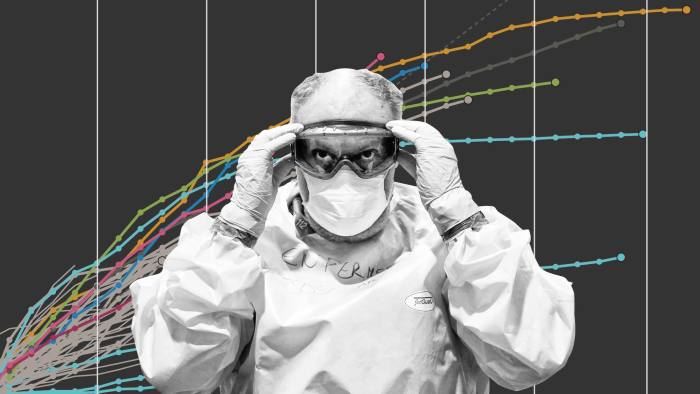NYSE reopens trading floor after two-month Covid shutdown
The New York Stock Exchange has partially reopened its famous Wall Street trading floor, with around a quarter of brokers returning after a two-month shutdown caused by the coronavirus crisis.
New York governor Andrew Cuomo rang the opening bell after roughly 100 brokers, mostly from small firms dependent on a physical space on NYSE’s floor, were assigned desks behind Plexiglas screens, and navigated by markers to show where each person may work.
Traders were prohibited from using public transport to get to work, required to sign papers indemnifying the exchange if they caught coronavirus, and asked to follow the exchange’s health regulations — all practices that could become commonplace as financial hubs try to pack up home offices and get back to work.
Joe Gawronski, president of Rosenblatt Securities, the biggest of the floor brokers, said NYSE had been “pretty thoughtful” in the way it had redesigned the floor.
“Between the reduced numbers, required spacing, the masks, the sheer size of the space, I think it’s one of the safest places you can go to work,” he said. “The only question for us in considering a return was whether the safety measures would be adequate to protect our people, and since we deemed them so, it wasn’t really a question.”
Closing the floor on March 20 — the NYSE’s first such move in its 228-year history — was a grim indication of the impact of the coronavirus on financial markets and on the city’s daily life.
New York State has been one of the parts of the US hardest hit by Covid-19, with more than 360,000 cases and over 23,000 dead.
Many brokers were “itching” to return, said Mr Gawronski. His firm was allocated seven slots by the exchange. “We had more volunteers than what we were given,” he said.
Designated market-makers, who can intervene to smooth out volatile trading periods, will continue to operate remotely.
The closure has reignited the question of the longer-term value of so-called “open outcry” trading at the NYSE. In the interim, the exchange has been electronic, in line with rivals like Nasdaq and CBOE Global Markets. NYSE runs three other electronic-only share trading venues.
A study earlier this month by Sifma, a body that represents brokers, asset managers and banks, said NYSE had lost a couple of percentage points in market share — in terms of volume of shares traded — but cautioned that the numbers often fluctuated. NYSE’s owner Intercontinental Exchange said in April it expected the market share loss to begin to recover once the trading floor was reopened.
Editor’s note

The Financial Times is making key coronavirus coverage free to read to help everyone stay informed. Find the latest here.
“The fact that it went seamlessly is really a testament to all of the people involved,” said Shane Swanson, senior analyst at consultancy Greenwich Associates. Though going all-electronic had an impact on NYSE’s volumes, “on a logistical level, it operated very well,” he added.
The staged return to normality comes as more companies prepare to launch initial public offerings in a calmer market environment after the convulsions of March and April. In the past two weeks, six companies have filed plans to float in the US, surpassing all the filings in April.
The NYSE allowed some traders on to the trading floor during the shutdown to help launch IPOs. However, it found some of its customers’ corporate policies prevented employees travelling to the trading floor.

